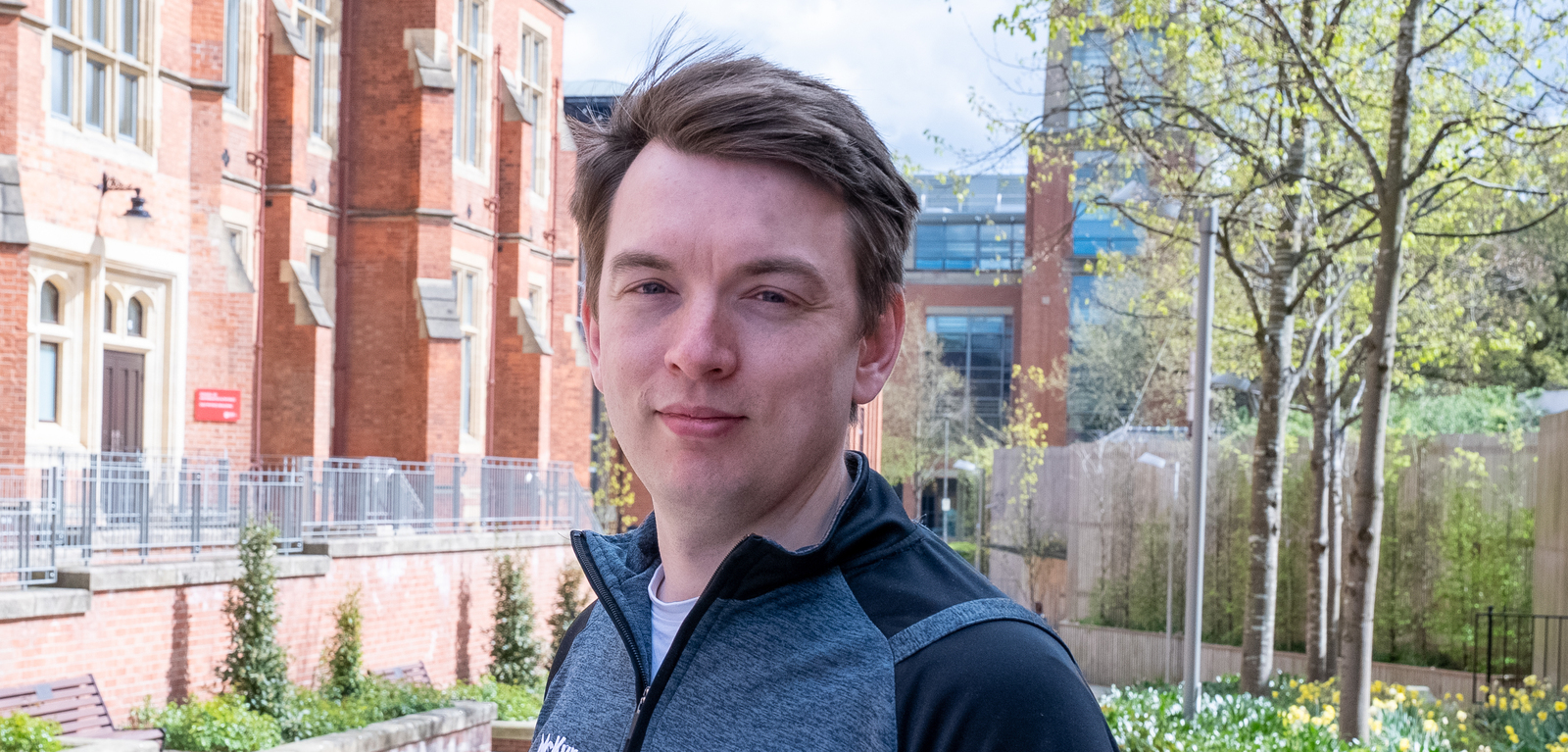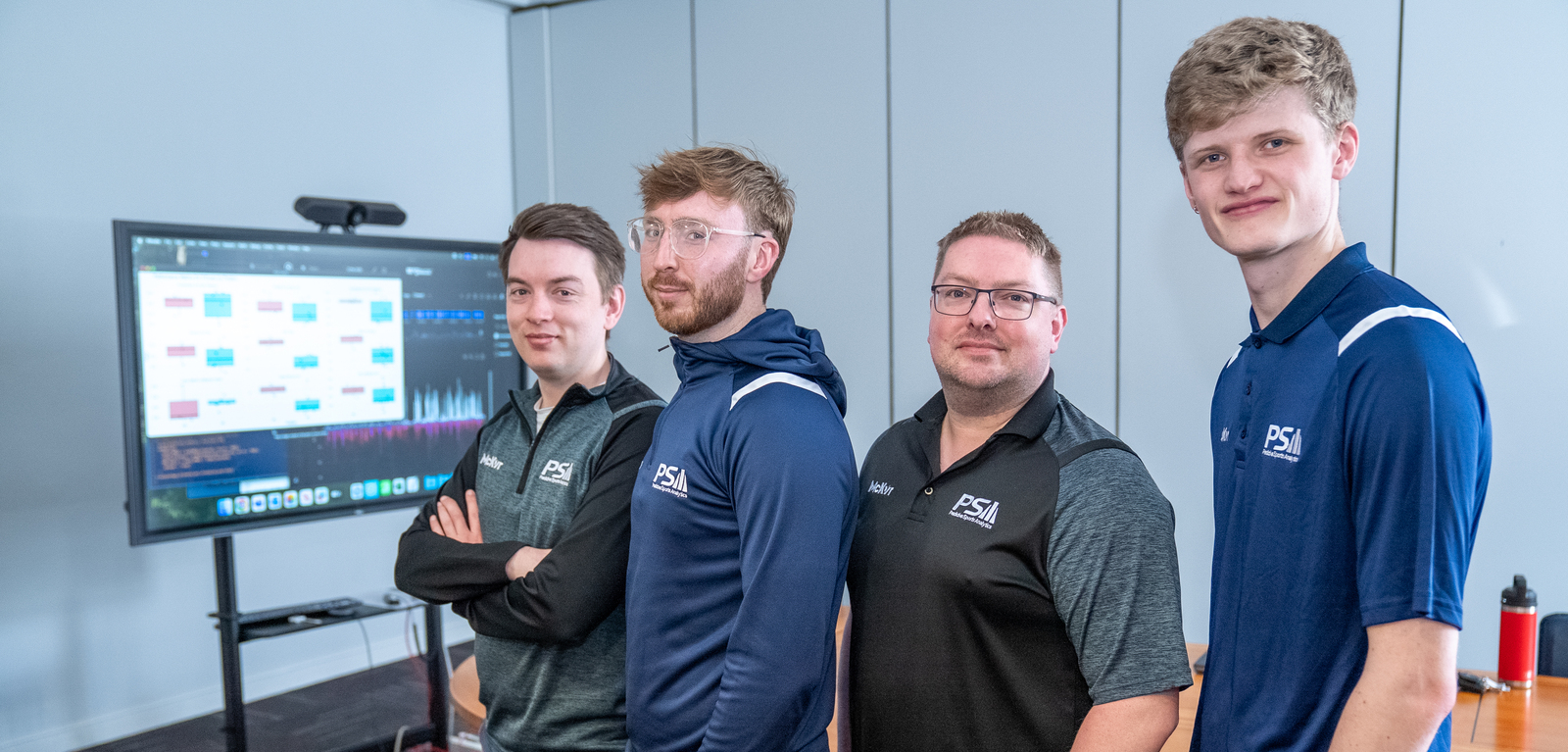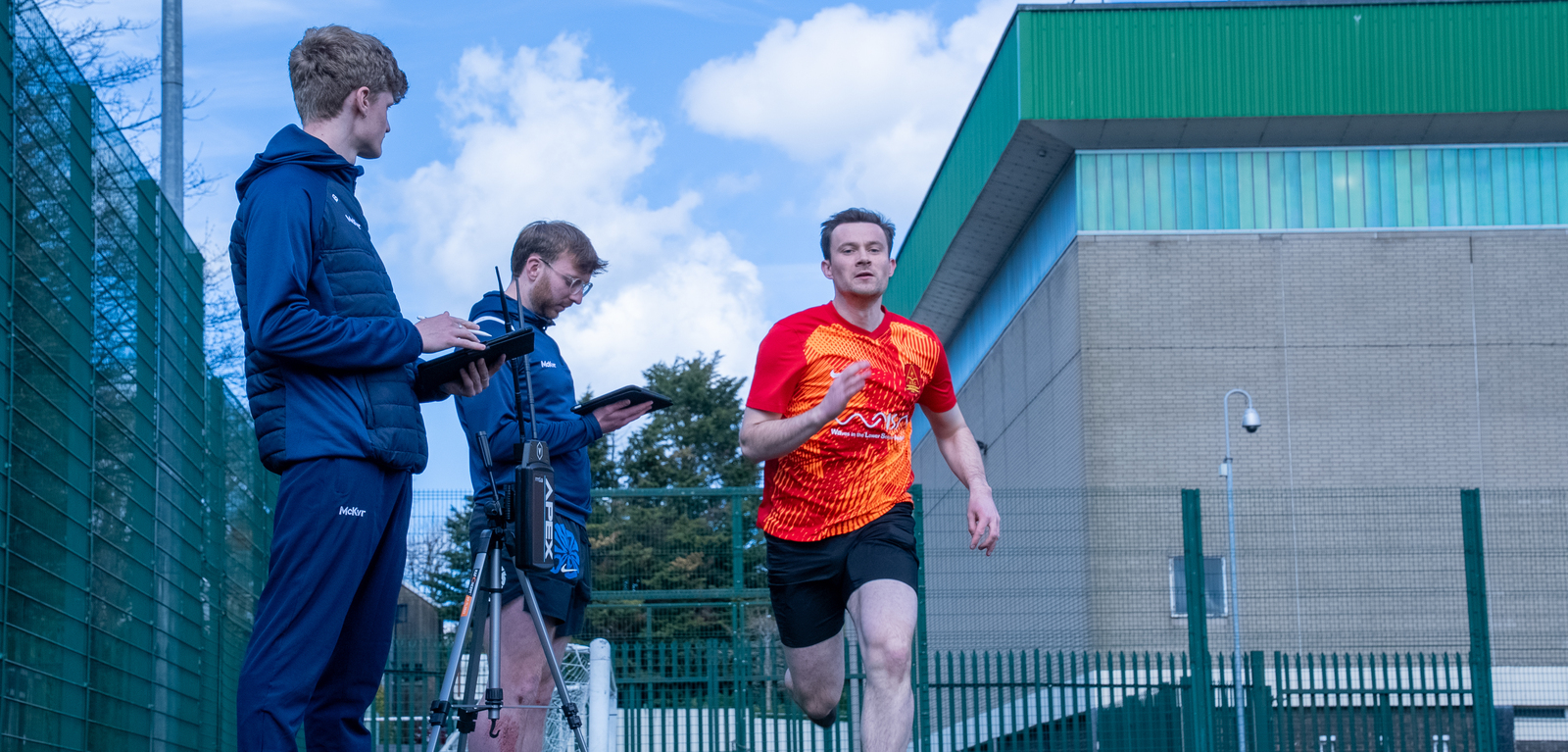From stargazing to game-changing
From analysing solar flares to tracking player collisions, Queen’s lecturer Dr Sam Grant reveals how his expertise in big data is giving sports science a much-needed boost.

As a solar physicist, Sam and his team study the sun. A fact, which according to him, makes them the “odd cousins of astronomy, not having to work at night”.
“All the big buzzwords today in science, business and technology are things like: big data, machine learning and AI. But, in reality astronomers are the largest of big data collectors in the world.”
This, says Sam, is because they take their time looking for it. He explains: “A day-to-day thing for a solar physicist is dealing with large data loads, but we’re looking for embedded little nuggets of treasure amongst the sea of stuff we’re not interested in.
“If we are looking for an effect, the galaxy, the universe or the sun is our laboratory; we can't tinker with it, we can't tailor aspects of it. We simply have to sit back and watch until the effect that we are hoping to happen actually occurs. What that means is that we will set up satellites and instruments to observe an object for years in the hope of just capturing one single event that might be quite marginal compared to the background.”
This, explains Sam, may just be a tiny flicker in the light of a star that might occur once a year - but it provides his team with valuable information.

It was during the Covid pandemic when Sam’s professional and personal interests collided, and he and his colleagues had the opportunity to apply some of their data expertise to improving sporting performance. When Sam began working with a cricket data company, he quickly realised that many sports organisations don’t have the tools or understanding to interpret the data they were collecting.
He says:
"Any football or rugby player wears a GPS tracker which output a huge amount of data. But the data for most teams goes back to a physiotherapist. They’re very good at what they do, but they're not going be able to open up a data sheet with 6.3 million data points on it and make any sense of what's going on. Whereas for us as scientists, six million data points is an everyday occurrence. So, the data is incredibly underused.”
Working with STATSports, Sam’s team began to mine player data collated across different sports such as football, GAA and rugby, as they looked to “peer beneath all the fuzz and extract useful information that up until now the sports science field hasn't been able to do.”
In collaboration with Cliftonville and Ards football clubs, they tracked players’ heart rates to analyse training impact: “Our data could identify the areas where the players were struggling most and could tailor their training to remedy those aspects, improve performance and prevent injuries.”
This overall picture is useful but, says Sam, they’ve also been able to go further by developing models to predict heart rate spikes.
He explains:
“The heart rate monitors link to the sports tracker and can identify activity so we were in a position to predict the heart rate activity of a player, and in turn, identify early indication of a spike or cardiac event.”
BEYOND G-FORCES: THE PHYSICS OF IMPACT
As public awareness grows around the impact of concussion in contact sports - particularly boxing and rugby – Sam is using a physics-based approach to redefine how we understand collisions on the pitch or in the ring.
Sam says there’s a misunderstanding in how collisions are measured: “In terms of rugby, the software will output values for you like distance travelled, sprints and accelerations. And they had a metric for what they defined as collisions, but when I mined behind the code for this, I realised that there wasn't a clear and obvious standardised metric or an understanding of what is a force on a player and what is a collision.”

He explains that talking about the term G-Force doesn’t cut it: “As a physicist, that makes my skin crawl a bit, because acceleration isn't force. I would need to put in a lot more force to move an international rugby player back three metres than I would to move someone like me back three meters. You know, if somebody's 120 kg and built like a car, I can push on them all I want, they're going nowhere. Whereas, if you came along and pushed me, you could move me, no problem at all. So, the amount of force is really what's important.”
Some of the team’s calculations have recorded some collisions as equivalent to being hit by a car at 37mph, a stark reminder of the physical toll and serious risk of damage.
PREVENTION NOT GUESSWORK
Sam explains that by calculating the angle and force of a hit, they can better understand how damaging it is – not just in the moment but over time:
“I can appreciate that if somebody gets booted in the head, they'll be concussed. But what if it takes 20 collisions over 40 minutes? What does that mean for them over a full season?”
He stresses the importance of not relying on guesswork and instead using this kind of approach into policy through collaboration.
“Recently, a Scottish player passed the head injury assessment, even though the sensors in his mouth guard registered a large G Force impact. But one of the Scottish coaches had a look at him and said that he wasn’t going back as he didn't know where he was.’”

Sam’s goal is to take the ambiguity out of these moments and replace it with science.
“What we're trying to do is to give them a more concrete, scientifically backed, assessment so that they can determine that once they’re hit over a certain threshold, they're not going back out into the pitch. And that takes it out of the hands of the coaches, and gives us the opportunity to inform their decisions with data.”